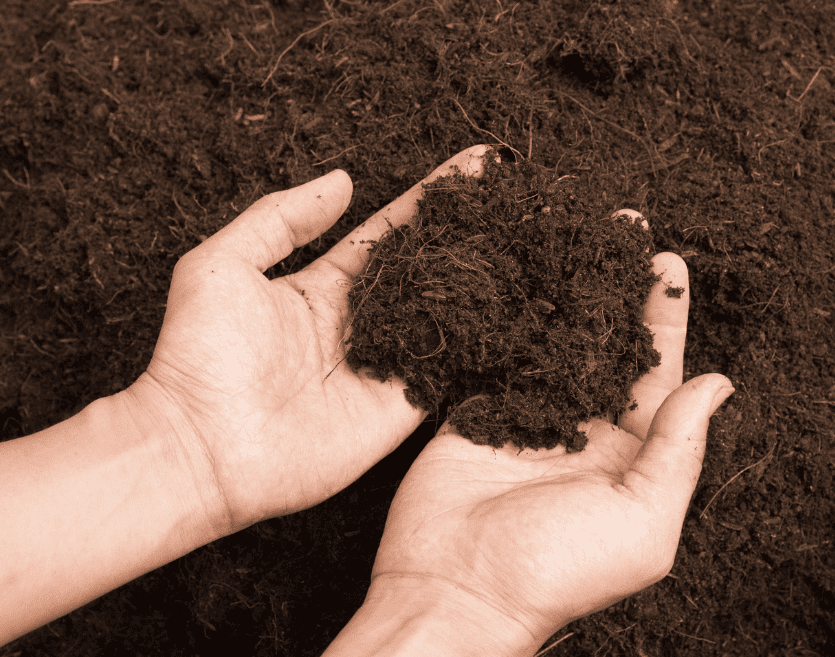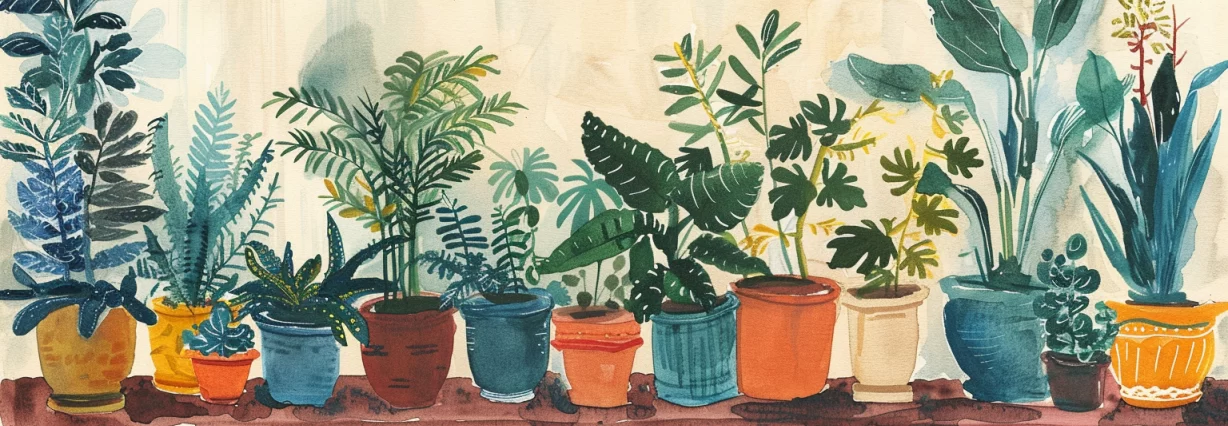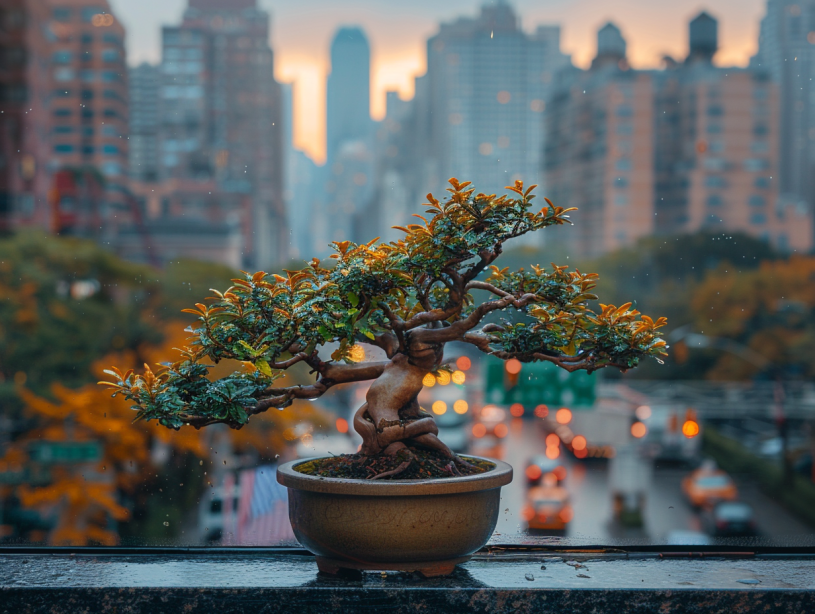Bonsai is an ancient Japanese art form that involves growing miniature trees in small containers. This art form aims to create a realistic representation of nature in a small space. Bonsai trees are a beautiful addition to any garden and require special care, including the right soil mix.
Understanding the basics of bonsai soil is crucial for the health and growth of your bonsai tree. Bonsai soil is not the same as regular garden soil, and using the wrong type of soil can lead to root rot and other problems. The ideal bonsai soil should provide good drainage, aeration, and water retention while allowing the roots to breathe. The soil should be able to hold enough water to keep the roots moist without becoming waterlogged.
Bonsai Soil Essentials

Purpose of Bonsai Soil
Bonsai soil is a crucial element for growing and maintaining bonsai trees. The soil’s primary purpose is to provide a stable foundation for the tree’s roots while also allowing for proper drainage and aeration. Unlike regular garden soil, bonsai soil is specifically formulated to meet the specific needs of bonsai trees.
The right soil mix will provide the tree with the necessary nutrients and the right balance of water and air. The soil should retain enough water to keep the tree hydrated but not so much that it becomes waterlogged. It should also be well-draining to prevent root rot and other fungal diseases.
Characteristics of Quality Bonsai Soil
Quality bonsai soil should have certain characteristics to ensure optimal growth and health of the tree. Some of the key characteristics of quality bonsai soil include:
- Aeration: Bonsai roots need oxygen to survive, so the soil should be well-aerated to allow for proper air circulation.
- Drainage: The soil should allow for excess water to flow out of the pot, preventing waterlogging and root rot.
- Water retention: The soil should retain enough water to keep the tree hydrated but not so much that it becomes waterlogged.
- Nutrient-rich: The soil should contain the necessary nutrients for the tree’s growth and development.
- pH balance: The soil’s pH should be within the appropriate range for the specific tree species, as different species have different pH requirements.
Bonsai soil can be a mix of organic and inorganic materials, depending on the tree’s specific needs. Organic materials such as peat moss or compost provide nutrients for the tree, while inorganic materials such as sand or gravel provide drainage and aeration. A bonsai soil mix should be well-balanced to provide the tree with the necessary nutrients, water, and air.
Components of Bonsai Soil
Bonsai soil is a unique type of soil that is specifically formulated to provide the necessary nutrients, water, and air to the bonsai tree. It is a well-draining soil that allows for proper aeration of the roots. Bonsai soil is made up of both organic and inorganic components. This section will discuss the different components that make bonsai soil.
Organic Components
Organic components are those that are derived from living organisms. They are essential for providing nutrients to the bonsai tree. Organic components that are commonly used in bonsai soil include:

- Peat Moss: It is an excellent moisture retainer and helps to keep the soil moist.
- Compost: It provides nutrients to the bonsai tree and improves soil structure.
- Bark: It helps to improve soil aeration and drainage.
- Coir: It is a sustainable alternative to peat moss and provides excellent moisture retention.
Inorganic Components
Inorganic components are those that are derived from non-living materials. They are essential for providing structure and drainage to the bonsai soil. Inorganic components that are commonly used in bonsai soil include:

- Akadama: A Japanese volcanic clay that is excellent for water retention and aeration.
- Pumice: A lightweight volcanic rock that helps to improve soil aeration and drainage.
- Lava Rock: A porous rock that helps to improve soil aeration and drainage.
- Perlite: A lightweight volcanic glass that helps to improve soil aeration and drainage.
It is important to note that the composition of bonsai soil can vary depending on the type of bonsai tree and the climate in which it is grown. It is recommended to consult with a bonsai expert to determine the best soil composition for your bonsai tree.
Soil Texture and Particle Size
Bonsai soil texture and particle size are critical factors that affect the growth and health of bonsai trees. Bonsai trees require a well-draining soil mix that provides adequate aeration and moisture retention to support healthy root growth. This section will discuss the importance of particle size and optimizing soil texture for bonsai trees.
Importance of Particle Size
Particle size is an essential factor determining bonsai soil’s porosity and water-holding capacity. The ideal particle size for bonsai soil should be between 1 and 5 mm. Larger particles promote better drainage, while smaller particles increase water-holding capacity.
According to Bonsai4Me, “A particle-based, well-structured inorganic soil allows fast water drainage and fresh air to continually enter the soil. A compacted organic soil that has lost its structure will not drain well and will not allow fresh air to enter the soil.”
Using a bonsai soil sieve to grade particle sizes effectively achieves the desired consistency and adjusts the moisture-holding capacity. A carefully graded bonsai soil mix ensures that the roots receive the right amount of water and air, promoting healthy root growth.
Optimizing Soil Texture
Soil texture refers to the soil’s relative proportions of sand, silt, and clay. The ideal soil texture for bonsai trees should be a mixture of inorganic and organic components. Inorganic components such as pumice, lava rock, and akadama provide good drainage and aeration, while organic components such as peat moss, pine bark, and coconut coir improve water retention.
According to Bonsai Empire, “A good bonsai soil mix should balance water retention and drainage. Too much water retention will lead to root rot, while too much drainage will lead to water stress.”

To optimize soil texture, it is essential to use a well-balanced bonsai soil mix that provides adequate drainage, aeration, and water retention. A good bonsai soil mix should contain 50% to 70% inorganic components and 30% to 50% organic components.
In summary, soil texture and particle size are critical factors affecting bonsai trees’ growth and health. By understanding the importance of particle size and optimizing soil texture, you can create a well-draining soil mix that provides adequate aeration and moisture retention to support healthy root growth.
Water Retention and Drainage
Bonsai soil is a specialized soil mixture designed to provide optimal water retention, drainage, and aeration. Water retention and drainage are two of the most important factors to consider when choosing or creating a bonsai soil mix. This section will discuss how to balance water retention and ensure proper drainage for your bonsai tree.
Balancing Water Retention
Water retention is crucial for the health of your bonsai tree. The soil needs to be able to soak in and retain sufficient quantities of water to supply moisture to the bonsai between each watering. However, too much water retention will damage your tree. Excess water must be able to drain immediately from the pot. Too much water retention will rot the roots and kill the bonsai tree.
To balance water retention, a bonsai soil mix should contain a combination of different soil components. Organic components such as peat moss, bark, and compost can help to retain moisture. Inorganic components such as sand, vermiculite, and perlite can help to improve drainage and aeration.
Ensuring Proper Drainage
Proper drainage is equally important as water retention. Excess water in the soil can lead to root rot and other fungal diseases. A bonsai soil mix should contain a high percentage of inorganic components to ensure proper drainage. Inorganic components do not break down over time, allowing water to flow freely through the soil.
Sand provides good drainage and aeration, while loam improves water retention and nutrient retention. Peat moss helps retain moisture and can be used to adjust the soil’s acidity. Vermiculite and perlite are both light and airy materials that help improve drainage and aeration.
In summary, balancing water retention and ensuring proper drainage are essential for the health of your bonsai tree. A bonsai soil mix should contain a combination of organic and inorganic components to provide optimal water retention, drainage, and aeration.
Soil pH and Fertilization
Understanding Soil pH
The soil’s pH level is an essential factor in the growth and development of bonsai trees. The pH scale ranges from 0 to 14, with 7 being neutral. A pH level below 7 is considered acidic, while a pH level above 7 is alkaline. Most bonsai trees prefer slightly acidic soil with a pH range between 5.5 and 6.5.
Understanding the soil’s pH level is crucial because it affects the availability of nutrients for the plant. Soil with a high pH level will have more minerals and nutrients available for the plant to absorb. On the other hand, soil with a low pH level will make it difficult for the plant to absorb minerals and nutrients from the soil.
To ensure the soil has the correct pH level for the bonsai tree, it’s essential to regularly test and balance the pH levels with either lime or sulfur, depending on the plant’s specific needs. A pH testing kit can be purchased at a local gardening store or online.
Fertilization Requirements
Fertilization is a crucial aspect of bonsai tree care. Bonsai trees require a balanced fertilizer that contains nitrogen, phosphorus, and potassium. Nitrogen is essential for leaf and stem growth, phosphorus promotes root growth and flowering, and potassium helps with overall plant health and disease resistance.
It’s important to fertilize the bonsai tree during the growing season, which is typically from early spring to late summer. During this time, the tree is actively growing and needs the extra nutrients to support its growth.
When fertilizing the bonsai tree, following the manufacturer’s instructions is essential. Over-fertilization can cause damage to the roots and leaves, while under-fertilization can lead to stunted growth and poor health.

In addition to using a balanced fertilizer, it’s also essential to adjust the fertilization schedule based on the specific needs of the bonsai tree. Some trees may require more frequent fertilization, while others may require less. Monitoring the tree’s growth and adjusting the fertilization schedule is important.
Overall, understanding soil pH and fertilization requirements is crucial to the health and growth of bonsai trees. With the right balance of nutrients and pH levels, bonsai trees can thrive and reach their full potential.
Repotting and Soil Replacement
Repotting Frequency
It is essential process for bonsai tree maintenance. The frequency of repotting depends on the age and type of tree, the pot size, and the soil quality. Younger trees require more frequent repotting than older ones. Generally, repotting should be done every two to three years for deciduous trees and every three to five years for evergreens. Tropical trees may require repotting every year.
Steps for Soil Replacement
Soil replacement is an important aspect of repotting. It ensures that the tree receives the necessary nutrients and oxygen. The following steps should be followed for soil replacement:
- Remove the tree from the pot: Gently remove the tree from the pot, being careful not to damage the roots.
- Remove old soil: Use a root rake or chopstick to remove the old soil from the roots. Be gentle and avoid breaking or damaging the roots.
- Trim roots: Trim the roots to remove any damaged or dead roots. This will promote new root growth.
- Add new soil: Add new soil to the pot, making sure to cover the roots completely. Use a mix of soil that is suitable for the type of tree being repotted.
- Water the tree: Water the tree thoroughly to settle the soil and remove any air pockets.
- Place the tree in a shaded area: Place the tree in a shaded area for a few weeks to allow it to recover from the repotting process.
It is important to note that bonsai trees should not be fertilized immediately after repotting. This can cause damage to the roots. Wait at least two weeks before fertilizing the tree.
Customizing Soil Mixes
Creating the perfect soil mix for a bonsai tree is crucial for its growth and health. While standard soil mixes are available, customizing the mix can provide better results. Here are two ways to customize soil mixes for bonsai trees.

Soil Mixes for Different Bonsai Species
Different bonsai species require different soil mixes. For instance, coniferous bonsai trees require a well-draining soil mix with good aeration, while deciduous trees require a soil mix that retains more moisture.
It is essential to understand the specific needs of the bonsai species to create a custom soil mix. Research the species to determine its native environment and growing conditions. Then, choose the soil components accordingly, ensuring that the mix provides the required drainage, aeration, and moisture retention.
Adjusting Soil Mixes for Climate
Climate is another factor that can affect the soil mix for bonsai trees. For instance, the soil mix should retain more moisture in hot and dry climates to prevent the tree from drying out. On the other hand, in cooler climates, the soil mix should have better drainage to prevent waterlogging.
Adjusting the soil mix for the climate can help the bonsai tree thrive in its environment. Consider the temperature, humidity, and rainfall patterns of the location where the bonsai tree will be grown. Then, adjust the soil mix components to provide the necessary moisture retention or drainage.
Customizing soil mixes for bonsai trees is essential in creating the optimal environment for their growth and health. By considering the specific needs of the bonsai species and the climate, the soil mix can be tailored to provide the required drainage, aeration, and moisture retention.
Troubleshooting Common Soil Issues
Bonsai soil is the foundation of a thriving bonsai tree. Even with proper care and maintenance, issues can arise with the soil that can negatively impact the tree’s health. Here are some common issues with bonsai soil and their solutions:
Soil Compaction
Soil compaction occurs when the soil particles become too tightly packed, preventing proper drainage and air circulation. This can lead to root rot and other issues. To fix this issue, the soil needs to be loosened. This can be done by gently poking holes in the soil with a chopstick or fork. Additionally, adding organic matter such as peat moss or compost can help improve the soil structure and prevent compaction.
Poor Drainage
Poor drainage is a common issue in bonsai soil that can lead to root rot and other issues. To improve drainage, it is important to ensure that the soil is not too dense and that there are adequate drainage holes in the pot. Additionally, adding materials such as perlite or sand to the soil mix can improve drainage.
Nutrient Deficiencies
Bonsai soil can become depleted of nutrients over time, leading to yellowing leaves and stunted growth. To address this issue, it is important to fertilize the tree regularly with a balanced fertilizer. Additionally, adding organic matter such as compost or manure to the soil can help replenish nutrients.
pH Imbalance
The pH of the soil can impact the tree’s ability to absorb nutrients. If the pH is too high or too low, the tree may experience nutrient deficiencies or toxicity. To address this issue, it is important to regularly test the soil’s pH and adjust it as needed with materials such as lime or sulfur.
By addressing these common soil issues, bonsai enthusiasts can help ensure their trees remain healthy and thrive for years.
Frequently Asked Questions
What are the essential components of a bonsai soil mix?
A bonsai soil mix should be well-draining and provide adequate aeration to the roots. The essential components of a bonsai soil mix are akadama, pumice, and lava rock. Akadama is a Japanese clay-like soil that retains moisture while allowing air to flow, pumice is a volcanic rock that is light and porous, and lava rock is another porous volcanic rock that provides drainage and aeration.
How often should bonsai soil be replaced or refreshed?
Bonsai soil should be replaced or refreshed every two to five years, depending on the tree type, the pot size, and the growing conditions. Over time, the soil can become compacted and lose its ability to drain and provide adequate aeration to the roots.
Can you create a bonsai soil mix without using akadama, and what are the alternatives?
Yes, creating a bonsai soil mix is possible without using akadama. Some alternatives to akadama include diatomaceous earth, calcined clay, and pine bark. These materials can be mixed with pumice and lava rock to create a well-draining, aerated soil mix.
What is the significance of lava rock in a bonsai soil composition?
Lava rock is significant in a bonsai soil composition because it provides excellent drainage and aeration to the roots. Its porous nature allows water to flow through the soil, preventing waterlogging, which can lead to root rot. Additionally, lava rock is a lightweight material that helps reduce the pot’s overall weight.
Where are the best places to purchase quality bonsai soil?
Quality bonsai soil can be purchased from specialty bonsai nurseries, online retailers, and garden centers. Choosing a reputable supplier that offers high-quality soil components and has a good track record of customer service is important.
What common misconceptions exist about using non-traditional materials like cat litter in bonsai soil?
One common misconception is that cat litter can be used as a substitute for akadama. While some types of cat litter may have similar properties to akadama, they are not recommended for use in bonsai soil mixes. Cat litter can contain chemicals and additives that can be harmful to the tree, and it may break down too quickly, reducing its effectiveness in the soil mix. Using high-quality, bonsai-specific soil components in a bonsai mix is always best.


